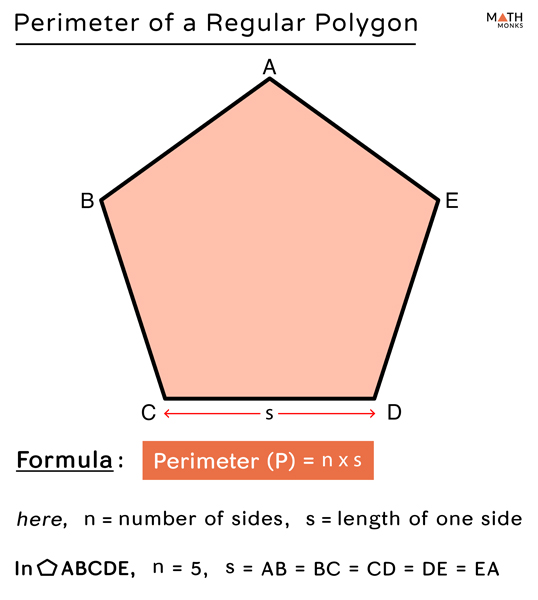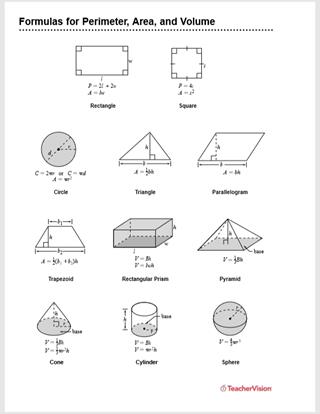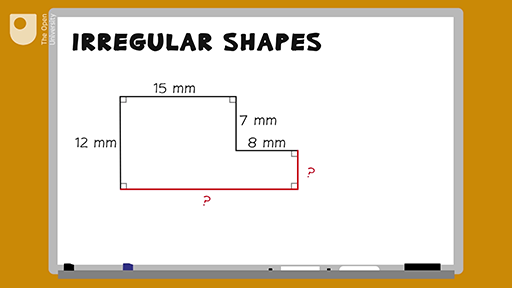Topic find the perimeter of a regular octagon: Discover how to find the perimeter of a regular octagon with this comprehensive guide. Learn the formula, explore examples, and understand the mathematical principles behind calculating the perimeter. Perfect for students, teachers, and math enthusiasts looking to enhance their geometry skills.
Table of Content
- Find the Perimeter of a Regular Octagon
- Introduction to Octagons
- Definition of a Regular Octagon
- Properties of Regular Octagons
- Formulas for Regular Octagons
- Steps to Find the Perimeter of a Regular Octagon
- Applications of Octagons in Real Life
- Practice Problems
- Frequently Asked Questions (FAQs)
- Conclusion
- YOUTUBE: Hướng dẫn cách tính chu vi của một đa giác bát giác đều trong toán học. Video này sẽ giúp bạn hiểu rõ hơn về cách tính chu vi của một đa giác bát giác đều và áp dụng nó vào các bài toán thực tế.
Find the Perimeter of a Regular Octagon
A regular octagon is a polygon with eight equal sides and eight equal angles. Calculating the perimeter of a regular octagon is straightforward if you know the length of one side. The formula for the perimeter P of a regular octagon with side length a is:
This means that the perimeter is simply 8 times the length of one side.
Example Calculation
For example, if each side of the octagon is 5 units long, the perimeter P would be:
Therefore, the perimeter of the octagon is 40 units.
General Properties of a Regular Octagon
- A regular octagon has 8 equal sides and 8 equal angles.
- Each interior angle of a regular octagon measures 135 degrees.
- Each exterior angle of a regular octagon measures 45 degrees.
- The sum of all interior angles of a regular octagon is 1080 degrees.
Formulas Related to Octagons
The area A of a regular octagon with side length a can be calculated using the formula:
For instance, if the side length a is 5 units, the area A would be:
Thus, the area of the octagon is approximately 120.71 square units.
Applications of Octagons
Regular octagons are found in various real-world contexts such as architecture, design, and nature. Understanding their geometric properties helps in practical applications like constructing shapes, designing patterns, and solving mathematical problems.
READ MORE:
Introduction to Octagons
An octagon is a polygon that has eight sides and eight angles. Each side of a regular octagon is of equal length, and each interior angle measures 135 degrees. Octagons can be found in both regular (with all sides and angles equal) and irregular forms. They are a fascinating geometric shape often studied for their unique properties and applications in various fields such as architecture and design.
In a regular octagon, each exterior angle measures 45 degrees. The total measure of the interior angles of an octagon is 1080 degrees, calculated using the formula \((n-2) \times 180^\circ\), where \(n\) is the number of sides. Due to its symmetrical properties, the regular octagon is often used in design and construction to create aesthetically pleasing and structurally sound shapes.
Mathematically, the area and perimeter of a regular octagon can be determined using specific formulas. The perimeter \(P\) is calculated as \(P = 8a\), where \(a\) is the length of one side. The area \(A\) can be calculated using the formula \(A = 2a^2(1 + \sqrt{2})\). These formulas provide a straightforward method to determine the dimensions and space occupied by the octagon.
Definition of a Regular Octagon
A regular octagon is a polygon with eight equal sides and eight equal angles. The term "octagon" is derived from the Greek words "okta" meaning "eight" and "gon" meaning "side" or "angle." In a regular octagon, all sides are of equal length, and all interior angles are equal, each measuring 135 degrees.
The properties of a regular octagon include:
- Eight sides of equal length.
- Eight vertices, where the sides meet.
- Eight interior angles, each measuring 135 degrees.
- Eight exterior angles, each measuring 45 degrees.
- The sum of all interior angles is 1080 degrees.
- The sum of all exterior angles is 360 degrees.
- 20 diagonals can be drawn inside the octagon.
A regular octagon can be inscribed in a circle, with each vertex touching the circumference. This circle is called the circumcircle, and the radius of this circle is known as the circumradius. The radius of the circle that fits perfectly inside the octagon, touching all its sides, is called the inradius.
The formula to calculate the perimeter of a regular octagon is:
\[ P = 8a \]
where \( P \) is the perimeter and \( a \) is the length of one side.
The formula to calculate the area of a regular octagon is:
\[ A = 2a^2(1 + \sqrt{2}) \]
where \( A \) is the area and \( a \) is the length of one side.
Regular octagons have unique properties that make them useful in various fields such as architecture, engineering, and design, due to their symmetry and structural integrity.
Properties of Regular Octagons
A regular octagon is a polygon with eight equal sides and eight equal angles. Below are some of the key properties of regular octagons:
- All 8 sides are of equal length.
- All 8 interior angles are equal, each measuring 135°.
- The sum of all interior angles is 1080°.
- The sum of all exterior angles is 360°, with each exterior angle measuring 45°.
- A regular octagon has 20 diagonals.
- It has 8 lines of symmetry and rotational symmetry of order 8.
The perimeter of a regular octagon can be calculated using the formula:
\[ P = 8a \]
where \( a \) is the length of one side.
For example, if each side of a regular octagon is 5 units, the perimeter \( P \) would be:
\[ P = 8 \times 5 = 40 \text{ units} \]
The area of a regular octagon can be calculated using the formula:
\[ A = 2a^2 (1 + \sqrt{2}) \]
where \( a \) is the length of one side. For example, if each side of a regular octagon is 4 units, the area \( A \) would be:
\[ A = 2 \times 4^2 \times (1 + \sqrt{2}) = 2 \times 16 \times (1 + \sqrt{2}) = 32(1 + \sqrt{2}) \approx 77.25 \text{ square units} \]
Formulas for Regular Octagons
When dealing with regular octagons, it's essential to understand the formulas that govern their properties. One crucial formula is for finding the perimeter of a regular octagon, which involves knowing the length of one side. The perimeter (P) of a regular octagon with side length (s) can be calculated using the formula:
\[ P = 8s \]
This formula simply states that the perimeter of a regular octagon is eight times the length of one of its sides. Let's break down how to use this formula:
- Identify the side length (s): Measure or determine the length of one side of the regular octagon.
- Plug the value into the formula: Substitute the length of the side (s) into the formula \( P = 8s \).
- Calculate the perimeter: Multiply the side length by 8 to find the perimeter of the regular octagon.
Using this formula, you can easily find the perimeter of any regular octagon by knowing the length of just one of its sides.

Steps to Find the Perimeter of a Regular Octagon
Finding the perimeter of a regular octagon involves understanding its properties and utilizing the appropriate formula. Here's a step-by-step guide:
- Identify the side length: Measure or determine the length of one side of the regular octagon.
- Understand the perimeter formula: Know that the perimeter (P) of a regular octagon with side length (s) is given by \( P = 8s \).
- Substitute the value: Plug the length of the side into the formula \( P = 8s \).
- Calculate: Multiply the side length by 8 to find the perimeter of the regular octagon.
By following these steps, you can efficiently determine the perimeter of any regular octagon.
Applications of Octagons in Real Life
Octagons find various applications in real-life scenarios, particularly in architecture, design, and everyday objects. Here are some examples:
- Architecture and Design: Octagonal shapes are commonly used in architectural designs, especially in the construction of buildings, bridges, and pavilions. Their symmetrical and visually appealing nature makes them popular choices for structures.
- Everyday Objects: Octagonal shapes can be found in everyday objects such as stop signs, which are octagonal to enhance visibility and draw attention to drivers. Additionally, certain furniture pieces and decorative items may feature octagonal designs for aesthetic appeal.
These are just a few examples showcasing how octagons are integrated into real-life applications, demonstrating their versatility and practicality.
Practice Problems
Practice problems are an excellent way to reinforce your understanding of finding the perimeter of a regular octagon. Here are some problems to test your skills:
- Problem 1: Given a regular octagon with a side length of 6 cm, calculate its perimeter.
- Problem 2: If the perimeter of a regular octagon is 56 units, what is the length of each side?
- Problem 3: A regular octagon has a perimeter of 80 meters. What is the length of one of its sides?
Take your time to solve these problems, and feel free to check your answers once you're done. Practice makes perfect!
Frequently Asked Questions (FAQs)
Here are some common questions related to finding the perimeter of a regular octagon:
- What is a regular octagon?
A regular octagon is a polygon with eight equal sides and eight equal angles. - How do you find the perimeter of a regular octagon?
The perimeter of a regular octagon can be found by multiplying the length of one side by 8. The formula is \( P = 8s \), where \( P \) is the perimeter and \( s \) is the length of one side. - Why is the formula for the perimeter of a regular octagon \( P = 8s \)?
Since a regular octagon has eight equal sides, multiplying the length of one side by 8 gives the total perimeter. - Can you find the perimeter of a regular octagon if you know the length of one diagonal?
Yes, you can find the perimeter using the length of one diagonal. However, it requires additional steps and trigonometric calculations. - Are there any real-life applications of finding the perimeter of a regular octagon?
Yes, knowing how to find the perimeter of a regular octagon is useful in various fields such as architecture, construction, and engineering.
These are just a few of the frequently asked questions regarding the perimeter of a regular octagon. If you have any further inquiries, feel free to ask!

Conclusion
In conclusion, understanding how to find the perimeter of a regular octagon is essential for various mathematical and practical applications. By utilizing the formula \( P = 8s \), where \( P \) represents the perimeter and \( s \) denotes the length of one side, you can efficiently calculate the perimeter of any regular octagon.
Moreover, the knowledge of octagonal shapes extends beyond mathematical contexts and finds relevance in real-life scenarios such as architecture, design, and everyday objects. Whether it's designing a building or understanding road signs, the concept of the regular octagon's perimeter plays a significant role.
With practice and familiarity, you can confidently apply these principles to solve problems and understand the significance of regular octagons in various fields. Keep exploring and discovering the beauty of geometric shapes and their practical implications!
Hướng dẫn cách tính chu vi của một đa giác bát giác đều trong toán học. Video này sẽ giúp bạn hiểu rõ hơn về cách tính chu vi của một đa giác bát giác đều và áp dụng nó vào các bài toán thực tế.
Hướng dẫn cách tính chu vi (p) của một đa giác bát giác đều
READ MORE:
Hướng dẫn cách tính chu vi của một đa giác bát giác trong toán học. Video này cung cấp các phương pháp và ví dụ cụ thể để bạn hiểu rõ hơn về cách tính chu vi của một đa giác bát giác và áp dụng nó vào các bài toán thực tế.
Cách Tính Chu Vi Của Một Đa Giác Bát Giác













